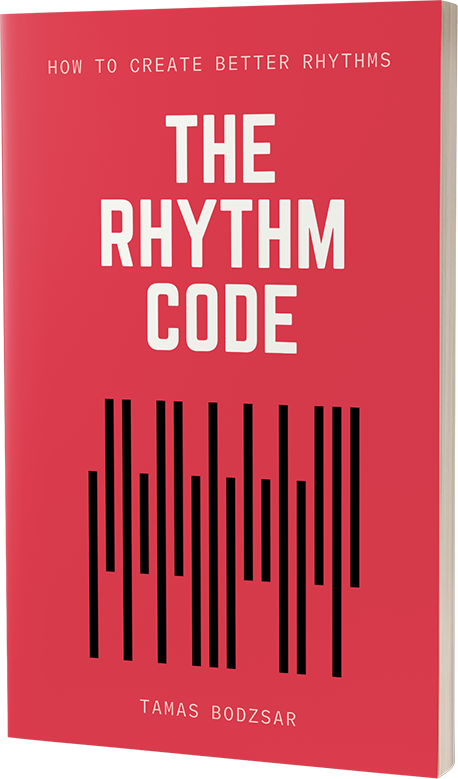
Do all chord progressions need to include the tonic? It depends on what we are talking about. Most people identify the “one” (I.) chord as a tonic, but the truth is, we can use four tonic chords in a song even if the song doesn’t modulate into another key. (I teach all the chord functions in our songwriting course.) But even if we only count only diatonic chords, there are two tonic chords: the I. and the VI.
So in reality, there aren’t many chord progressions without any tonic chords in them. However, if we only want to avoid the tonic “one” chord, we can find many examples of these kinds of chord progressions. And the truth is, there is no practical use in avoiding both the “one” and the “six” chords. It’s completely possible, but there’s no point in it.
If you want to learn more about this stuff, go through our online songwriting course in which I show you how you can create melodies for chord progressions that don’t contain the tonic I. chord.
IV – V
One of the few solutions for avoiding any tonic chords is if we only use two chords in the whole song. One example of this is the IV – V chord progression. For example, if the song is in the key of C-major, we can use the F major and G major chords.
They utilize this technique in the song “Friends” by Justin Bieber. The song is in the key of Eb-major and the chords are Ab major and Bb major in the entire song. Another example is the song “Dreams” by Fleetwood Mac which is in the key of C-major, and the chords are F-major and G-major.
So how do we determine the key from two chords? If we would only hear the chords, we wouldn’t be able to tell the key. But we can always determine the key if we also listen to the melody.
There is a huge misunderstanding about the IV – V chord progression. Many musicians believe that if the chord progression starts with the IV and it also contains the V, then it’s a Lydian chord progression. But the truth is, the chord progression alone doesn’t determine the mode of the song, so the song is NOT necessarily in Lydian mode. In fact, none of these two songs (Friends and Dreams) are in Lydian mode!
However, there is a song in which they used the IV – V chord progression in the verse. The song is “Man On The Moon” by R.E.M. The song is in the key of G-major and here is the chord progression of the verse:
IV – V – IV – IV
C – D – C – C
So how do we know that this song is in Lydian mode? We know this because of the melody. I already wrote an article about this in more detail, you can read it here: Lydian chord progressions. And keep in mind that in “Man On The Moon”, they only avoid the tonic chords in the verses, but they use them in the chorus.
IIm7 – V7
The other two-chords solution comes from jazz music. The IIm – V chord progression is a very distinctive cadence of jazz but they use it a lot in popular genres too. And the truth is, this chord progression is a variation of the previous one. Because the IIm is a substitution of the IV chord. They are both subdominant functions.
There are two very famous songs in which they use this solution. One of them is the song “Use Me” by Bill Withers, and the other one is “Uptown Funk” by Bruno Mars. Notice that both songs utilize a funk groove, and also the blues scale. For example, if your chord progression is Cm7 – F7, you can use the C – Eb – F – F# – G – Bb blues scale to create your melody.
VIm – V – IV – IV
As I mentioned before, we don’t have many options to avoid all tonic chords, including the VI. If we want to use more than just the II, the IV, and the V, then it’s inevitable to use a tonic chord in our song. So in the next few examples, I will show chord progressions that don’t contain the tonic “one” but will contain the VIm. However, I still tried to choose songs that feel like there is no resolution in them.
One of these examples is the song “Best Of You” by Foo Fighters in which the chord progression makes us feel like there is no resolution in it. The song is in the key of E-major, and here is the chord progression:
VIm – V – IV – IV
C#m – B – A – A
IIm – V – VIm
In theory, the IIm – V jazz cadence should be resolved to I. But you can avoid the I. and use the VIm chord instead. This is called a false cadence by the way. As the VIm is also a tonic function, it’s just a substitution of the I. They use this chord progression in the song “Englishman in New York” by Sting. The song is in the key of D-major, and the chords are Em – A – Bm.
IIIm7 – VIm7 – IIm7 – V7
This chord progression is a variation of the previous one, except it doesn’t necessarily need to start with the IIm. If we put one more chord before the VIm, we get a very common chord progression that is used in jazz. These four chords can go around and around, never resolving to the tonic I. Familiar? As it turns out, it’s not just today’s pop songs that are using this technique.
One of the songs that is using this chord progression is “Greatest Love Of All” by Whitney Houston. But notice that they only avoid the tonic I. chord in the chorus. The song is in the key of A-major, and the chord progression is:
IIIm7 – VIm – IIm7 – V
C#m7 – F#m7 – Bm7 – E
IV – VIm – V
If you think about it, this chord progression is a variation of the IV – V solution. It starts with the subdominant IV and ends with the dominant V. So it feels like it never resolves, and there is constant tension. They just put a VIm chord in the middle.
One of the songs that use this chord progression is “Wildest Dreams” by Taylor Swift. However, she only uses it in the verses, and the chorus starts with the tonic I. chord. The song is in the key of Ab-major, and the chord progression in the verse is:
IV – VIm – V – V
Db – Fm – Eb – Eb
The other song in which they use this chord progression is “Sorry” by Justin Bieber. Unlike the previous song, they never use the tonic I. chord in this one. They use the very same chord progression throughout the whole song, including the verse and the chorus too. This song is in the key of Eb-major and the chord progression is:
IV – VIm – V – V
Ab – Cm – Bb – Bb
VIm – IV – V – IIm
The verse of the song “Message In A Bottle” by The Police completely avoids using the tonic I. chord. This is a more unique chord progression, and in fact, the verse is written in the Dorian mode. However, in the chorus, they use the tonic I. chord, and it is in a regular Ionian mode. The song is in the key of E-major, and the chord progression is:
VIm – IV – V – IIm
C#m – A – B – F#m
IVmaj7 – III7 – VIm7 – I7
If we look at the chord progression of the song “Thank U Next” by Ariana Grande, we might think that the first chord is the tonic I. and it’s in the key of Gb-major. Take a look at the chord progression:
Gbmaj7 – F7 – Bbm7 – Db7
But this song doesn’t contain a tonic I. chord (at least not a regular one), and it’s in the key of Db-major. How is this possible? If we only look at the chord progression, we would believe that because if the Db7 and the Gbmaj7 chords, they are V7 and I. But if we listen to the melody, we can realize that the tonal center of the song is the note Db.
So the song is in the key of Db-major. And as it turns out, it’s possible to use a I7 chord and not use the regular tonic I. chord. The I7 chord is a so-called borrowed chord that we borrow from another key. So this is another way we can avoid using the tonic I. chord.
The secret pattern behind successful songs
Get the eBook for $4.99

